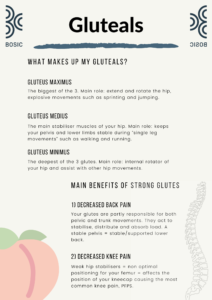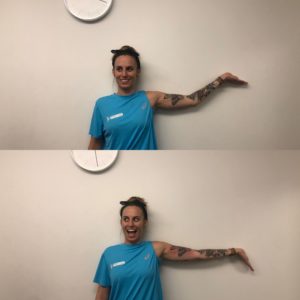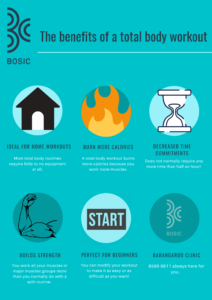Strong glutes – do they make a difference?
By Physiotherapist, Vanessa Boon
The Benefits of Strong Glutes
Your gluteals are the largest and strongest muscles in your body. They are made up of the 3 muscles: gluteus maximus (glute max), gluteus medius (glute med), gluteus minimus (glute min).

Your glute max, as the name suggests, is the biggest of the 3. Its main role is not only to extend and rotate the hip but also to drive explosive movements like sprinting and jumping (it is also the muscle that gives your bum its shape).
Your glute med is one of the muscles you would hear your physiotherapist harp on about. It is the main stabiliser muscle of your hip. This muscle keeps your pelvis and lower limbs stable during “single-leg movements” such as walking and running.
Your glute min is the deepest of the 3 glutes. It is the main internal rotator of your hip and also helps with other movements such as abduction.
As a whole, they work to optimise proper hip and lower limb function along with stabilsing your pelvis. Besides that, here are 2 main benefits that come along with strengthening your glutes!
Decreased back pain
Your glutes are partly responsible for both pelvic and trunk movements. They act to stabilise, distribute and absorb load. A stable pelvis = stable/supported lower back. With load, your glutes help to distribute load to your lower limbs and absorb any excess through your lower back.
Decreased knee pain
This is mainly because your glutes keep your pelvis stable. Unstable pelvis = increased load to knees. Besides that, to be more specific, weak hip stabilisers (glute med) can cause non-optimal positioning for your femur which affects the position of your kneecap. This can cause the most common form of knee pain, known as PFPS (patellofemoral pain syndrome).
Conclusion
Whether you are trying to get that Kim K look, get more explosive power in your runs/jumps, or prevent back and knee pain, strengthening your glutes can be as easy as adding squats/bridges/lunges into your exercise routine. When exercising the lower body, be more specific with which muscle you are trying to target. Whatever your goal, we can help you with that! To find out more about how we can help, give us a call at 8599 9811 or book in here to talk to one of our physiotherapists, and let’s get started towards your goals!












